Has Qantas got a brand crisis or just a PR problem?
Welcome to Unmade, written while you were sleeping on Wednesday morning.
Happy National Pineapple Upside-Down Cake Day.
Today’s writing soundtrack: Sibelius – Symphony No. 5.
Unmade’s paying subscribers received this email an hour ahead of the rest of our audience. Sign up now and support independent journalism.
If somebody in a senior role at a significant institution takes a holiday and it becomes a headline, there’s one thing to be sure about. They are not being lauded for taking a well earned break.
Remember Scott Morrison’s Hawaiian sojourn during the 2019 Bushfire Crisis? Or Texas senator Ted Cruz’s sneaking off to Cancun last year after a storm plunged his state into a power blackout? It’s hard to live down.
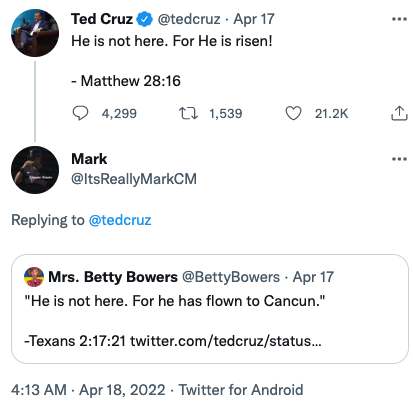
So it says a lot about the situation Qantas is facing that chief customer officer Stephanie Tully found herself on the front page of The Weekend Australian’s business section on Saturday, merely because she joined most of Australia in taking some leave over Easter.

Qantas has been facing the sort of turbulence that is rare for what has, in recent years, been both a well run business and a well stewarded brand. Back at the end of 2019 we selected Qantas as Mumbrella’s brand of the decade.
Both as a commentator and as a customer I’ve no beef with the airline. Indeed, as a declaration of interest, I own 16 shares in the company (which admittedly has lost me $7.40 since I bought them when I was trying out a share trading app a few weeks back). And thanks to my regular pre-Covid work trips to Singapore, I’ve got Platinum One status on the Qantas loyalty scheme.

But suddenly, it’s been nothing but headwinds for the $10bn airline.
Last week, the Australian Competition and Consumer Commission said it was considering a complaint from consumer campaign group Choice over the airline’s flight credits policy. One of the tactics used by the airline to manage its finances during the pandemic was to nudge customers into accepting flight credits rather than refunds.
Then there was a rare unforced error from CEO Alan Joyce earlier this month. In the run-up to Easter he referred to customers being “not match fit” for going through security screening. He told The Sydney Morning Herald: “I went through the airports on Wednesday and people forget they need to take out their laptops, they have to take out their aerosols.”
It may have been a legitimate observation, but it wasn’t the main reason the airports have been suffering heavy security delays. That appears to be because they are not currently adequately staffed, but passengers took the message – after it was reported that way – that Joyce was blaming them.
I say unforced error because Qantas is not responsible for airport security. Joyce could have stayed out of that one.
But there are plenty of issues within the Qantas wheelhouse. Social media is currently full of people frustrated at being separated from their baggage. In trying to keep flights on time, several Qantas flights have departed without luggage, which then creates a further chore for the airline when it needs to courier bags to customers later.
Critics suggest the baggage problem was because of the Qantas decision early in the pandemic to axe 2,000 jobs and outsource ground handling. Qantas argues it’s because of Covid-related staff sickness.
I experienced baggage problems myself a few weeks back when I flew into Heathrow from Sydney, only to discover my bags had been offloaded at Darwin. The most frustrating element was not the absence of the bags but the hours hanging around at the airport trying to work out what was going on; there were no Qantas staff around and no obvious place to go for help.
In their procedures that day the Qantas team were not, to borrow Joyce’s phrase, match fit. I dropped the airline an email afterwards, pointing out that there might be a lesson to be learned about the failure to communicate – having had 17 hours while we were in the air to prepare something. P1 or no P1, they did not reply.
But the major, ongoing PR problem for Qantas is that the call centre appears to have almost collapsed under customer demand.
Anecdotes of being on hold for at least two hours and often four are common – sometimes even for top tier customers whose calls are prioritised within the system. At the time of writing, a petition on Change.Org was approaching 20,000 signatures.

The problem has been building for weeks, or possibly months.
A major element is that customers are not able to solve all of their problems on the Qantas website, even when they try. Now the world is travelling again, everybody wants help at once, including to make use of their flight credits.
Tully emailed out an apology to customers a fortnight ago, citing call volumes nearly doubling from 7,500 to 14,000.
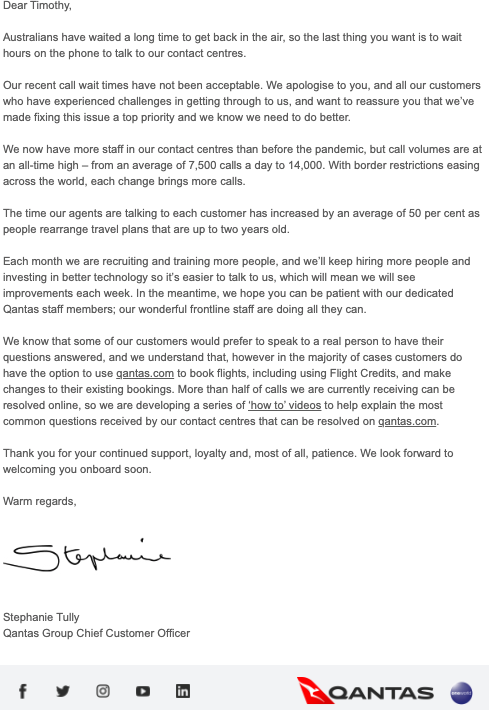
The same day Joyce acknowledged the delays during a speech to the Victorian Chamber of Commerce and Industry. His version was slightly different. He reckoned call volumes had not just doubled, but tripled, from 5,000 per day to 15,000.
Fair enough. To a point. It may be easy to say it with hindsight, but a sustained increase in call numbers when flying began again should have been predictable. Yet the message on the Qantas home page about unusual call volumes has been a constant for many months. There’s a point when unusual becomes the usual. When the bounceback came, the airline was not ready.
There’s currently widespread anger and frustration from customers. It’s not just a couple of noisy moaners trying to score apology points. The noise on social media is widespread. It would be fascinating to see a brand tracker.
It reminds me of the way people used to talk about Telstra when it struggled under the Sol Trujillo legacy when customer service was deprioritised against cost control.
I believe there is a difference in the two Australian giants though.
Qantas spent years putting credit in the bank. That’s why you invest in your brand in good times – because there might be a moment when you need the benefit of the doubt.
Going into the pandemic, the airline’s standing was such that although eyebrows were raised, the pubic was for the most part comfortable with the couple of billion dollars of public money spent on keeping Qantas solvent during the lockdowns, even as Virgin went to the wall.
And that bailout was at least partly thanks to years of public affairs management that created the benign political conditions. Those automatic MP memberships of the invitation-only Chairman’s Lounge were an investment for two billion dollar moments like 2020.
And Qantas kept working hard on maintaining its contact with customers during the pandemic, even with its advertising budgets dropped to near zero. It’s always understood how to create news stories about itself.
Retiring the last 747 with the public watching on flight tracker websites as it traced a roo on the radar was classic Qantas. What a poetic – and on-brand – sendoff.
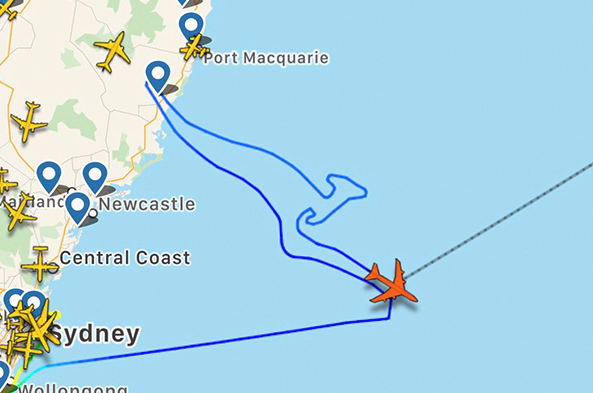
For the sentimental, Qantas auctioned off memorabilia. A particularly nerdy friend of mine now proudly loads up his 747 drinks trolley onto the back of his ute to serve up drinks to his friends at his local dog park on a Friday afternoon.
And more tangibly, rather than suspending the inflight magazine (and probably wiping out content provider Medium Rare in the process), Qantas pivoted to posting it to its top tier customers each month. For me, Travel Insider would sit on the coffee table all month, until the next one arrived. Turning to the back pages to see whether the route maps had reappeared became a ritual; life would be returning to normal when the maps came back.
So Qantas has a shot at winning its customers’ forgiveness when (if) the call centre is working properly again.
The airline has dealt with short, sharp PR crises over the past decade or so.
Flight QF32 was the nearest the company came to an actual disaster when one of the Rolls Royce engines on an A380 blew up as the plane climbed out of Singapore. Superior training and safety standards were arguably the reason why a large and experienced crew was in the cockpit to save the plane on that day in 2010. Despite the peril, the airline came through with its reputation enhanced.
And then there was the enormous gamble in 2011 when Joyce grounded the entire fleet in a confrontation with the unions.
If they get it right, in time the call centre issue has the potential to be just one more PR problem that was handled, rather than an existential brand crisis.
The 4 Ps
In the end, the traditional four Ps of marketing – product, price, place and promotion – will be what defines the brand’s next stage.
The call centre issue is a key part of that product experience, so can’t be marketed away without actually fixing it. By contrast, Telstra’s problem was that it was a bad product for years.
Price is an intriguing one. The Qantas Red e-deals are already back and running. Yet particularly for international travel, Qantas prices are overall way more expensive than pre-pandemic, and than many of its rivals now are on the same route. It will be fascinating to see whether the airline can maintain that. In large part, that will be justified by product experience. Again, there’s a clock ticking on getting the little things right that justify a premium.
Domestically the rebooted Virgin is already fighting for business passengers on price. For example, this coming Monday, It’ll cost $1,156 for a business class seat on the 7am Qantas flight from Sydney to Melbourne.

Virgin Australia wants $299 for the same business class flight.

That’s a hell of a premium for the Qantas experience. Even with business travellers often spending someone else’s money, that inflight breakfast will need to be really good.
Then comes place, which in a digital world includes how flights are marketed and sold online.
Qantas is on borrowed time on place. The website is mostly okay (it’s better than BA, or Emirates for instance), but it hasn’t significantly evolved in the last five years. For frequent users, the Qantas website appears to become overwhelmed by the sheer quantity of cookies it drops, which results in frozen screens on future visits. The frequent flyer forums are full of tips on how to navigate this (if you can’t bear to reenter all your passwords by deleting all your cookies, use incognito mode or a different browser).
The frustration level for passengers who can’t get the site to do what it’s supposed to when the alternative is a multi-hour wait for a call centre is tangible.
And then there’s promotion. This is where Qantas has got it right for many years – not just in how it shapes news coverage, but also its above the line advertising strategy. The airline feels intrinsically Australian, and safe.
Whether you accept loyalty marketing as part of that fourth P, or an additional discipline in its own right, the Qantas Frequent Flyer loyalty scheme is world leading. It’s brilliant at gamification and the wider behavioural economics behind it.
When I was flying a lot, there was no time when I didn’t know exactly how many status points I needed to retain my tier. I’d be readily nudged into buying flights based on things like double points rewards, far more than price.
I’d choose Woolworths over Coles for the points, and hire from Avis for the same reason.
I was entirely agnostic about hotels until Qantas linked up with Accor back in November last year. I’m about to hit my 30th night in Accor hotels in less than six months purely because of that tie up. That’s the power of a loyalty scheme.
When brands can get you do do things that you know are irrational then you have to admire their hold on you.
But the airline has other challenges ahead. Like many, I feel increasingly guilty about the amount of time I spend in the air. The launch of the Qantas green loyalty tier begins to address that disquiet, as do wider initiatives around the likes of “sustainable” fuel and more efficient planes. My guess is that in time Qantas will stop making the carbon offset fee voluntary and price it in for every passenger.
Sustainability is a challenge the whole airline industry will have to face, but as has usually been the case, Qantas seems to have moved slightly earlier than its global rivals.
Despite the current PR nightmare over the call centre, credit rating agency Moody’s upgraded its outlook for Qantas from “negative” to “stable” this week. It predicts that the airline is going to have a better year in 2023. I reckon I may yet get back my $7.40.
Unmade Index:
The post-Easter share market started positively for The Unmade Index yesterday.
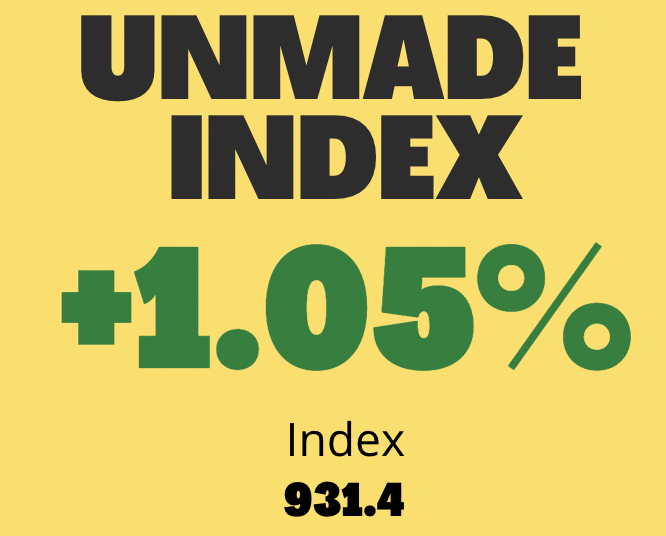
While the index is still down from its 1000-point opening at the start of the year, it was up 1% yesterday, reflecting similar movement on the wider ASX All Ords.
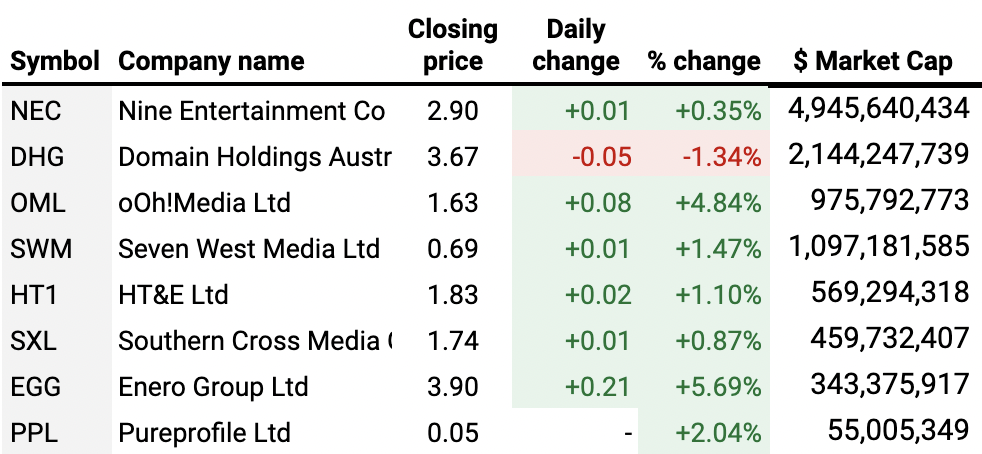
Out of home company Ooh Media had a particularly good day, rising by nearly 5%.
Time to let you go about your Wednesday.
We’ll be back with the latest instalment of the audio version of my book Media Unmade tomorrow. We’re almost up to date now – tomorrow’s chapter covers Covid’s devastating impact on media businesses.
As ever, I welcome your thoughts – email us at letters@unmade.media
Have a great Wednesday.
Toodlepip…
Tim Burrowes
Unmade

